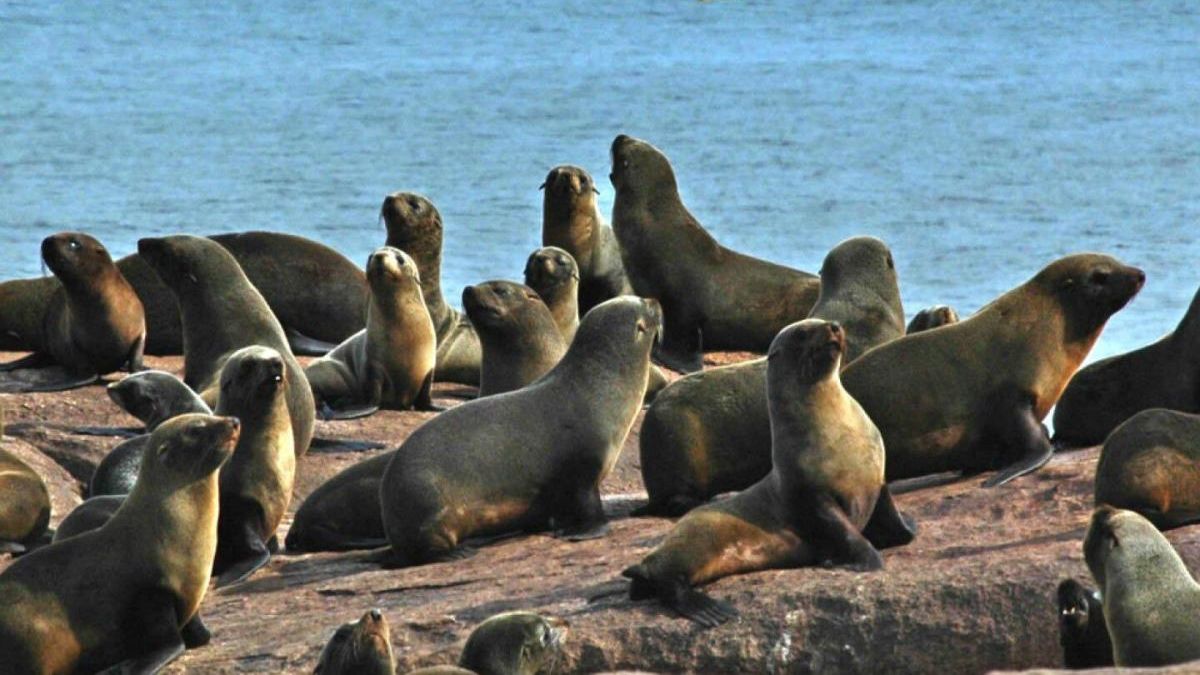Rocha buried 145 sea lions during the day yesterday, where departmental officials were working with heavy machinery to be able to move the bodies and be able to bury them, within a framework of advancement of bird flu which worries the government.
The departmental director of Ministry of Livestock, Agriculture and Fisheries, Alexander Manovsky, He explained that the department of Rocha has 180km of coastline, of which 145 are well monitored within the framework of the coordination carried out with other organizations.
Although there are places that are difficult to access such as the beaches of the Stoned to Cabo Polonioor from La Esmeralda to Punta del Diablo, are less populated by these animals. Manovsky assured that other coasts such as Cabo Polonio, Barra de Valizas and Aguas Dulces There is good monitoring of avian flu.
In this sense, the director clarified that there are many animals that try to return to the sea, but they arrive on the shores dying and stunned. Among the sea lions that go wrong, the majority present bird flu symptoms and within the 48 hours If detected, the animals probably die.
Concern in the tourism sector
While the government observes with caution and alerts the advance of the bird flu in sea lions in Uruguay, due to the effects that a large outbreak can have on the health situation and the economy of the country: in addition to the possibility of infections in people, as well as in birds – which multiply the circulation of the virus and put the poultry production sector at risk – there is now also the concern for How can avian influenza affect tourism?.
“We are attentive to the issue and with concern,” said the Minister of Tabare Viera Tourism to El Observador, within the framework of the lunch of the Association of Marketing Managers of Uruguay (ADM). The point is that sea lions are part of the tourist attraction of the Uruguayan coasts, so the advance of bird flu in this species it can bring complications for tourismat the doors of a new summer season.
Among businessmen in sectors linked to nautical tourism—and the nautical sector, in general—this situation raises alarm bells, to the point of pointing out that if avian flu spreads in Punta del Este “it is as if another Covid were coming”due to the impact it will have on the activity.
For now, the only measure that has been taken in this regard was that of enclosure of the Port of Punta del Este to prevent people from approaching the animals, in the presence of confirmed cases in that population of sea lions —without knowing precisely the level of reach of the virus among the specimens.
What to do in a suspicious case?
From the portfolio they recommended “emphatically avoiding direct contact with people and pets with specimens of live or dead sea lions” and, in the case of finding an animal with these symptoms, notify it by email to the National Directorate of Aquatic Resources (Dinara): [email protected].
On the other hand, among the visible symptoms are a lack of mobility – due to which neurological problems are generated – as well as nasal discharge, tremors and possible seizures.
However, they established that the “H5 virus It is transmitted orally and respiratoryly, and spreads through secretions (saliva or mucus) and excretions (urine, fecal matter)” and that “it can survive in the environment for a limited period of time that varies depending on the daily thermal oscillations: humidity, solar radiation and winds”, although in human health it represents a low risk infection.
In that sense, they highlighted that “the consumption of poultry meat, fish and others seafood “It does not represent any health risk for the population” since avian influenza “does not affect fish fauna, so fish populations are not at risk.”
Source: Ambito




